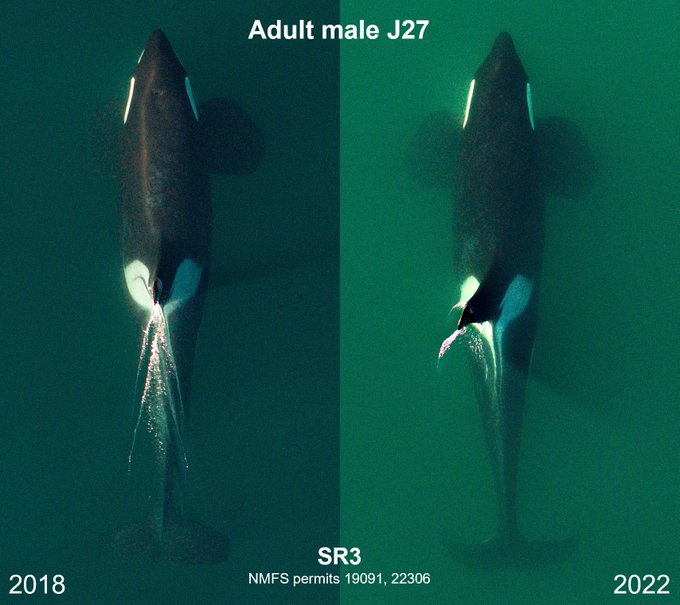Several Southern Resident Orcas have been declared vulnerable by Washington State after photographs taken from drones showed they had lost body mass.
Southern Residents primarily live in the Salish Sea in BC and Washington State in three family groups known as J pod, K pod, and L pod.
In June, the SeaLife Response Rehabilitation and Research team working for the Washington Department of Fish and Wildlife reported that a number of Orcas appeared to be in poor condition.
Twelve J- and L-pod Orcas were identified based on measurements of the fatness behind the skull.
Researchers say it increases their risk of mortality by two to three times.
One of the dozen whales in poor condition, known as L83, appeared to be pregnant when last measured in January.
Another Orca, L72, is also considered vulnerable because she’s in late-stage pregnancy.
Images recorded in September of last year showed three K-pod Orcas were in the last nine months of pregnancy.
Using online videos of a calf with K pod, it’s believed at least one of these pregnancies was successful.
A count done by the Center for Whale Research on San Juan Island in December put the Southern Resident population at just 73 individuals.
It is hoped the birth of J59 earlier this year, a report of one birth in K pod in May, and pregnancies found by the SeaLife Response Rehabilitation and Research team show the population is growing.
Washington State’s fish and wildlife department says the recent pregnancies are a hopeful sign for the Southern Resident population, but there are several Orcas that are not doing well and it’s very concerned about the population at large.
The department now requires commercial whale-watching vessels to keep at least one-half nautical mile away from endangered Southern Resident Orcas.






